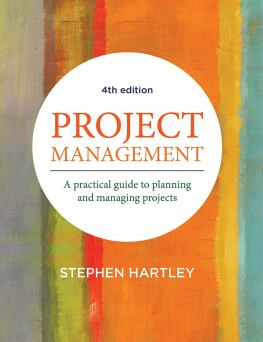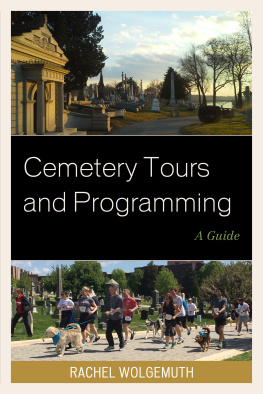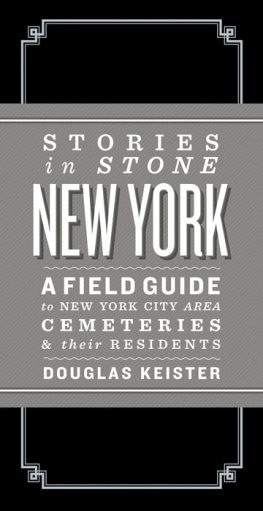TOM HARTLEY was born in Belfast in 1945 and has been active in politics for over forty years. He was both the General Secretary and National Chairperson of Sinn Fin and, in May 1993, he was elected to Belfast City Council, where he chaired several council committees, including the Arts and Tourism sub-committees and the Policy and Resources committee. From 2008 to 2009, he was lord mayor of Belfast. He retired from the Council in September 2013 after twenty years service to the citizens of Belfast.
In his spare time, Tom pursues his love of history and interest in the environment by organising historical walks through Belfast City Cemetery for File an Phobail. He works to highlight the importance of our burial sites as a repository of the political, social and economic history of Belfast. He is the author of the bestselling books Belfast City Cemetery and Milltown Cemetery.
BALMORAL
CEMETERY
THE HISTORY OF BELFAST, WRITTEN IN STONE
Tom Hartley
BLACKSTAFF PRESS
First published in 2019 by Blackstaff Press
an imprint of Colourpoint Creative Ltd
Colourpoint House,
Jubilee Business Park,
21 Jubilee Road,
Newtownards BT23 4YH
With the assistance of
The Arts Council of Northern Ireland

Text, Tom Hartley, 2019
Photographs, maps and illustrations, Tom Hartley, 2019, except where indicated.
The acknowledgements page constitutes an extension of this copyright page.
All rights reserved
Cover design by Two Associates
Tom Hartley has asserted his right under the Copyright,
Designs and Patents Act to be identified as the author of this work.
Produced by Blackstaff Press
A CIP catalogue record for this book is available from the British Library
EPUB ISBN 978-1-78073-242-8
MOBI ISBN 978-1-78073-241-1
www.blackstaffpress.com
For my sisters, Anna and Frances
We shall not cease from exploration
And the end of all our exploring
Will be to arrive where we started
And know the place for the first time
Through the unknown, unremembered gate
T.S. Eliot
from Little Gidding
ABBREVIATIONS
AEF | American Expeditionary Force |
ARHA | Associate of the Royal Hibernian Academy |
BA | Bachelor of Arts |
BBC | British Broadcasting Corporation |
BCH | Bachelor of Surgery |
DD | Doctor of Divinity |
DPH | Doctor of Public Health |
DSO | Distinguished Service Order |
FC | Football Club |
HEI Co. | Honourable East India Company |
JP | Justice of the Peace |
LLD | Doctor of Laws |
MA | Master of Arts |
MB | Bachelor of Medicine |
MCH | Master of Surgery |
MD | Doctor of Medicine |
MP | Member of Parliament |
PRHA | President of the Royal Hibernian Academy |
PRONI | Public Record Office of Northern Ireland |
PSNI | Police Service of Northern Ireland |
RAF | Royal Air Force |
RHA | Royal Hibernian Academy |
RN | Registered Nurse |
UVF | Ulster Volunteer Force |
ACKNOWLEDGEMENTS
This is the third book in my Written in Stone series, so I am no stranger to the exploration of historical information. Yet the assistance I have received for this, and for my previous books, has never failed to surprise and humble me. Throughout the process I have been introduced to a wide variety of individuals who have always given their time and knowledge with generosity. I owe a particular debt of gratitude to Professor George Bain, who has read the drafts of my three books. His encouragement and support since the production of my first manuscript have been a constant. Thanks are also due to the Revd Dr John Dunlop and Philip Orr, who took time to read my completed manuscript. My friend Mary Ellen Campbell always responded quickly to my request for information, despite the pressures of her studies and her role as a Belfast City councillor. A special word of thanks is due to Valerie Adams of the Presbyterian Historical Society of Ireland, keeper of so much wonderful information about the history of Presbyterianism in Ireland. David Hampton, who drew the maps in this book, and Stephen Stewart, with his knowledge of the topography of Belfast, have my deepest thanks.
My gratitude is due to Arthur Davidson and Damian John Cash for finding me the books that mattered. Special thanks are due to Colin Campbell and Jayne Byrne of Belfast City Council.
I would like to thank my editors at Blackstaff Press Michelle Griffin, Helen Wright and Patsy Horton my indexer, Jennifer Brown Patterson, and the rest of the publishing team.
In the writing of this book I have engaged with a range of individuals, and I wish to thank all of them for their help and support. They include: Niln Nic Bhloscaidh, Stephen Scarth, Revd David Campton, Roy Gamble, Kate Turner, David Craig, Vivienne Pollock, Stephen Weir, Chris Hillen, Maud Hamill, Linda Ervine, Lorraine Bourke, Ed Crawford, Oscar Ross, James OKane, Revd John Dickinson, Fr Michael Sheehan, Revd Jack Lamb, John Lynch, Jimmy Taylor, Tony McDonagh, Revd Chris Hudson, and Brian Hanna.
I am also indebted to the staff of the Ordnance Survey Land Registry Directorate, the Public Record Office of Northern Ireland, the Linen Hall Library, Belfast Central Library and the Ulster Museum for their continuing help and support.
Turning a manuscript into a book requires the talent of many. In that process, a critical response to the manuscript is necessary, albeit with a slight adjustment of the ego. But criticism as a gift from a generous friend brings its own learning, and is a core experience for any writer. In this respect I was privileged to enjoy the friendship and benefit from the critical eye of the late Seamus Kelters. I had known Seamus for many years, when, by chance, I met him in the Belfast City Cemetery, where he was showing his sons some of the historical headstones. He offered to read the material I was preparing for the cemeterys history. Seamus read my draft manuscripts for Belfast City Cemetery and Milltown Cemetery, and his insights and comments are now a part of the fabric of these two books. This book is missing his critical view, and for that we are all poorer. N bheidh a leithid ars ann. Grsta Dhia ar a anam uasal.
A special word of thanks is due to my wife, Birgit, whose help and support sustained me through the four years of researching the Belfast Cemetery, Malone.
While the writing of this book represents a journey with many wonderful individuals, I alone take responsibility for what is contained in this book.

INTRODUCTION
For over twenty years, I have sought to tell the story of Belfast, and that of its people, by exploring the history of the citys cemeteries. In every sense, those years represent a journey of discovery for me. I uncovered a multi-layered, complex and sometimes difficult history from the dynamic industrialism of the Belfast Protestant community explored in
Next page















